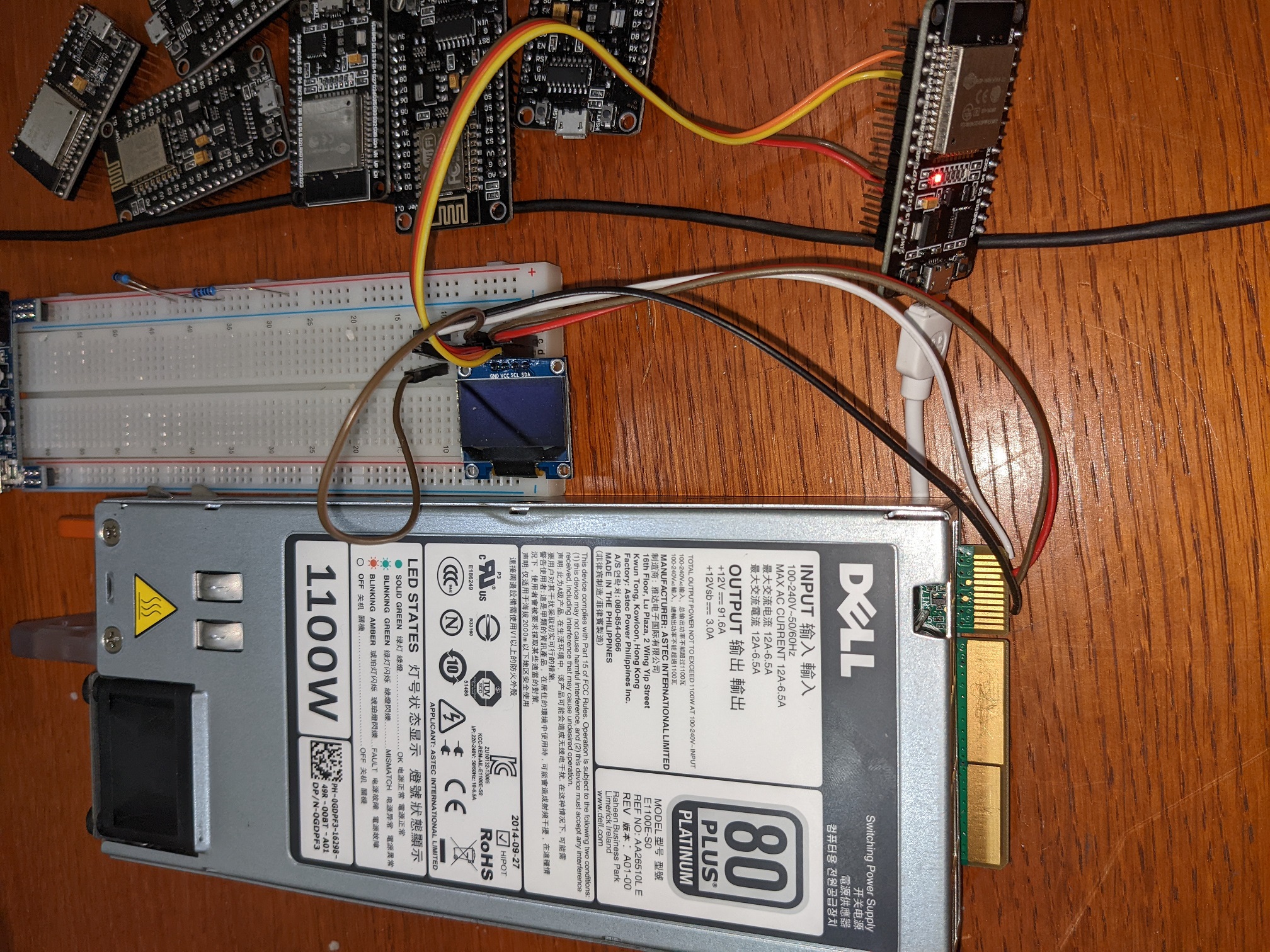For a while now I’ve wanted to create a PSU backplane and ATX rail generation for my computer using modular power supplies. Used server supplies are cheap and efficient.
Step one would be able to control them and read data from them with a microcontroller. So, I soldered the necessary wires directly to one of the PSUs I have laying around and plugged into a proto board.

I decided to use an ESP32 here since power usage isn’t an issue and I have a bunch of boards laying around. I was going to use an STM32, and my choice of a controller may still change as there’s no need for WiFi.
https://github.com/fdimitri/ESPPSUControl
As it stands I was able to find datasheets for the power supply, and get some communication going. I’m able to read all the documented registers, mostly properly.. though it doesn’t let me write to many of them when it should. There’s still a lot of work to do, but the basic PMBus interface is there and written from scratch. Refactor of initial code is incoming.
I need to add a few external transistors to pull some lines off the PSU low to power it on, right now it’s just jumper wires since I wasn’t too worried about the physical.
Next up is a PCB design using a CE connector that takes two of these things, then it’s back to work on software. I think I’m going to go standard 1oz copper and just make some bus bars to handle the current.
I’ll also need to design a pluggable card that provides ATX voltages since the PSU only does +12v and +12vsb. I’d like to have some digital control there (PMBus VRMs), but I may use cheap switching regulators in the first POC.

